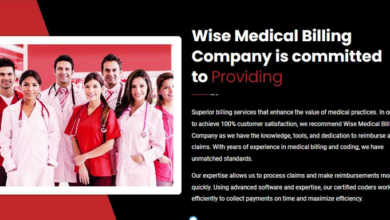Smarter Patient Connections with Communication Software

In today’s fast-paced healthcare world, patient experience matters more than ever. From appointment reminders to follow-ups and feedback, every interaction shapes how patients view your practice. But managing all those touchpoints manually can be overwhelming. That’s where patient communication software comes in, helping practices connect smarter, not harder.
Understanding the Modern Patient
Today’s patients expect convenience, transparency, and quick communication. They’re used to texting, booking appointments online, and receiving instant updates, just like they do with restaurants, hotels, and online stores. When healthcare lags, patients notice.
In fact, many patients now choose their providers based on digital convenience. Practices that make it easy to book, confirm, and communicate stand out. Patient communication software bridges that gap by offering tools that support better engagement, automation, and trust, all while saving time for staff.
What Is Patient Communication Software?
At its core, patient communication software is a platform that helps healthcare practices manage how they interact with patients. It’s designed to streamline communication through channels like text, email, phone, and even social messaging.
The best solutions combine several functions in one place, including:
- Automated appointment reminders and confirmations
- Online scheduling and digital forms
- Two-way texting and secure messaging
- Review requests and feedback collection
- Recall reminders for follow-up visits
Instead of juggling spreadsheets, sticky notes, and multiple systems, practices can manage all patient interactions from one easy-to-use dashboard.
Why Communication Matters More Than Ever
Good communication isn’t just about convenience. It’s about patient satisfaction and care quality. When patients feel informed and supported, they’re more likely to show up for appointments, follow treatment plans, and return for future visits.
Poor communication, on the other hand, can lead to missed appointments, misunderstandings, and frustration. Studies show that clear, consistent communication helps reduce no-shows and increases retention. A quick reminder text or an easy way to confirm an appointment can make a huge difference in a patient’s experience.
Modern healthcare practices are turning to smart tools for patient communication to streamline scheduling, reminders, and follow-ups while keeping patients engaged and informed.
Benefits of Using Patient Communication Software
1. Fewer No-Shows and Cancellations
Missed appointments can cost healthcare practices thousands each year. Automated reminders and confirmations through text or email make it easy for patients to stay on track. Many tools even let patients reschedule with just a few clicks, keeping schedules full and operations running smoothly.
2. Better Time Management for Staff
Administrative work can take up a large portion of staff time, from making phone calls to tracking down paperwork. Patient communication software reduces manual tasks, allowing your team to focus more on what truly matters: patient care.
By automating tasks like reminders and review requests, staff can reclaim hours each week.
3. Improved Patient Satisfaction
When patients feel heard, cared for, and informed, their trust grows. Quick replies, clear instructions, and personalized communication create a more positive experience. Patients who have good experiences are more likely to recommend your practice to others and leave great reviews online.
4. Secure, Compliant Communication
Healthcare data privacy is essential. Leading patient communication tools use secure, HIPAA-compliant messaging to protect sensitive information. That means patients can communicate safely, and practices can stay compliant without extra effort.
5. Increased Revenue Opportunities
Simple follow-up messages, such as reminders for annual checkups or overdue cleanings, can bring patients back who might otherwise forget. Automated outreach helps boost recurring appointments and keeps your schedule consistent throughout the year.
See also: Why You Should Consider Online Therapy: The Benefits of Accessible Mental Health Support
How Communication Software Builds Patient Trust
Trust is the foundation of any successful patient relationship. Communication software supports that by helping practices stay connected and transparent.
For example:
- After appointments, patients can receive automated thank-you messages and feedback requests.
- Before visits, they can fill out digital intake forms, reducing wait times and paperwork stress.
- In emergencies or changes, they can receive instant notifications instead of confusing phone chains.
These simple touches make patients feel valued and cared for, not just another name on a list.
Real-World Example: Making Every Interaction Count
Imagine a dental practice using patient communication software. A new patient books an appointment online and instantly gets a text confirmation. A day before the visit, an automated reminder goes out with the option to confirm or reschedule.
After the visit, the system sends a thank-you note and a review link. The patient leaves positive feedback, which boosts the clinic’s online reputation. The front desk doesn’t need to lift a finger throughout this process. Everything runs automatically and professionally.
That’s the power of smart communication, consistent, caring, and convenient.
Key Features to Look For
If you’re considering adding patient communication software to your practice, here are some must-have features to look for:
- Two-way texting – allows real-time patient communication
- Automated reminders – reduce no-shows without extra effort
- Online scheduling – gives patients 24/7 access to book appointments
- Feedback and review tools – help you build a stronger online reputation
- HIPAA compliance – ensures privacy and data protection
- Customizable messaging – lets you tailor messages to your brand and tone
The goal is to find a system that integrates seamlessly into your daily workflow, one that makes communication effortless for both your team and your patients.
Common Challenges and How to Overcome Them
Transitioning to new technology can feel intimidating. Some practices worry that automation might make communication feel less personal. But in reality, it’s the opposite.
With smart customization, messages can sound warm, friendly, and consistent. The right platform allows you to personalize reminders with the patient’s name, appointment details, or even custom greetings. This keeps communication professional yet human.
Another challenge is staff training. Choosing a platform that’s easy to use and offers onboarding support helps the team adapt quickly. Once the system is in place, most practices find it simplifies their workflow and reduces daily stress.
The Future of Patient Communication
As healthcare continues to embrace digital transformation, patient communication software will only grow more advanced. Artificial intelligence and data analytics are beginning to predict patient needs, such as identifying when someone might be due for a visit or noticing communication patterns that affect retention.
In the near future, practices will use insights from communication software to personalize patient experiences even further. Instead of one-size-fits-all messaging, patients will receive tailored outreach based on their preferences, history, and health needs.
Building Stronger Patient Relationships Through Technology
At its heart, healthcare is about relationships, and relationships thrive on communication. Patient communication software isn’t replacing human connection; it’s enhancing it.
By automating repetitive tasks and giving patients convenient ways to engage, healthcare providers can spend more time focusing on care itself. The result is a more connected, satisfied, and loyal patient base.
Final Thoughts
Smarter patient connections start with smarter communication. When practices use patient communication software effectively, they simplify workflows, improve satisfaction, and strengthen trust, all while saving valuable time.
Technology will continue to play a major role in how healthcare providers connect with patients. But the key to success isn’t just using new tools. It’s using them thoughtfully to create meaningful, human-centered experiences.





